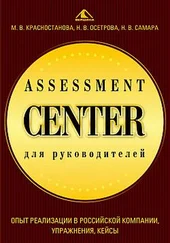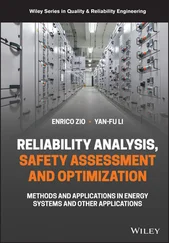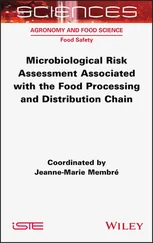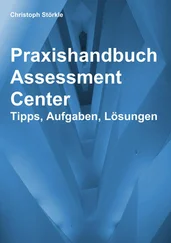3.2.4.6 Step 4.6: Quantify the Consequences
Determining the consequences involves several steps, not all of which are covered in this book:
What effects may the accident scenarios have? This may include to calculate the size of and heat flux from a fire, the overpressure from an explosion, or the impact energy in a collision.
How will the consequences differ depending on the accident scenario and how it develops? In most cases, there are barriers in place to mitigate the development of a scenario. Whether or not these barriers function as intended may have a significant impact on the consequences. A consequence spectrum can be developed based on the initiating event and the relevant accident scenarios. This may imply that the calculations in the previous step need to be repeated for a number of different scenarios.
What effects may each accident scenario have on the assets considered? Will a given overpressure cause fatalities or just injuries? Will the fire damage equipment or will it survive intact? Will an impact between two ships cause flooding and subsequent sinking of the ships? Are some of the assets particularly vulnerable (or resilient) to the consequences? If the personnel being exposed to a fire are fire‐fighters, they are equipped to tolerate much more heat than an unprotected person and this needs to be taken into account.
How likely is it that the assets considered will be harmed based on the above information?
This book is concerned mainly with the probabilistic analysis, implying that we cover only description of the consequence spectrum and assigning probabilities of loss of the assets. Calculations of physical effects and what affect these have on the assets is outside the scope. Specialist competence from a range of different engineering disciplines is usually required to do these calculations. Examples of methods for calculating the consequences can be found, for example, in Mannan (2012).
An issue that needs to be addressed is how far into the future the consequences should be assessed. For some types of accidents, notably exposure to radiation, the effects are not necessarily experienced until long after the accident has occurred. Normally, this should also be taken into account as a consequence in the analysis.
3.2.5 Step 5: Determine and Assess the Risk
The structure of step 5 is shown in Figure 3.8.
 Figure 3.8Step 5: Determine and assess the risk.
Figure 3.8Step 5: Determine and assess the risk.
3.2.5.1 Step 5.1: Summarize the Results
Steps 3 and 4 have produced all the information necessary to present the risk, often called a risk picture , in accordance with the requirements in step 1.2. The result presentation should highlight the main contributors to risk, important causes, and the consequences that may be experienced. Important barriers should be highlighted, to underline their importance for controlling risk.
3.2.5.2 Step 5.2: Assess Uncertainty
Uncertainty is a major issue in risk assessment and the results should also include an evaluation of the uncertainty in the results and conclusions that the risk analysis has arrived at. This can be done in different ways, ranging from a purely qualitative discussion to a comprehensive quantitative analysis. Methods for assessing uncertainty are discussed in Chapter 19.
3.2.5.3 Step 5.3: Evaluate the Risk
Risk evaluation involves to compare the results from the risk analysis with the risk acceptance criteria and to determine whether or not the criteria are met. Risk acceptance is further discussed in Chapter 5. Risk evaluation may be defined as:
Definition 3.3 (Risk evaluation)
Process in which judgments are made on the tolerability of the risk on the basis of a risk analysis and taking into account factors such as socioeconomic and environmental aspects.
The decision on whether the risk is acceptable may be based on a number of different criteria, such as the benefits gained from accepting the risk and the cost associated with reducing the risk. Even if the risk acceptance criteria are not met, the conclusion may still be that the risk can be tolerated because the benefits are so large that they outweigh the risk.
3.2.5.4 Step 5.4: Identify Risk Reduction Measures
Deciding on whether the risk should be reduced, how it should be done, and ensuring that risk reduction measures are implemented is not part of the risk assessment, but is left to the wider risk management process. Still, it is a part of risk assessment to provide decision‐makers with a basis for making these decisions. Identification and evaluation of potential risk reduction measures should, therefore, be included.
Based on our understanding of why and how accident scenarios can develop, we can also identify risk reduction measures. Three main principles for reducing risk may be used:
Prevent the initiating events from occurring.
Reduce the probability of the initiating events.
Reduce the consequences of the initiating events.
These principles are based on the accident model implemented in the bow‐tie, where the three principles address the bow‐tie from left to right. Chapter 14discusses risk reduction measures in more detail and presents methods for identifying and evaluating the measures.
3.2.5.5 Step 5.5: Determine Risk Reduction Effect
The key criterion for determining whether to implement a proposed risk reduction measure is obviously the effect the measure may have on the risk. In addition, several other factors may be considered:
Scope. Will the measure have an effect on one or more hazards?
Reliability and availability. Can we expect the measure to work when required?
Robustness. Will the measure be implemented in practice and will it have an effect?
Duration. Will the effect last for just weeks or months, or for many years?
Negative effects. Will the measure have negative side‐effects?
Cost. How much will the measure cost to implement and operate/maintain?
Chapter 14discusses this in more detail.
3.2.5.6 Step 5.6: Determine Cost of Risk Reduction Measures
An important factor that influences the decision to implement a risk reduction measure is cost. In Chapter 14, cost–benefit analysis is discussed, as a tool for analyzing efficiency of risk reduction measures. In a cost–benefit analysis, the cost of introducing a risk reduction measure is compared with the benefits that can be expected. Because the benefit is a risk reduction (e.g. reduction in injuries and fatalities) that cannot be compared directly with costs, we also need to express the benefits in monetary terms. This is one of the contended aspects of cost–benefit analysis, in particular because of the need for expressing loss of life and human injuries in monetary terms.
3.2.6 Step 6: Risk Presentation
Step 6 is divided into two substeps: 6.1 Prepare report and 6.2 Present results.
3.2.6.1 Step 6.1: Prepare Report
The outcome of the risk assessment is a description of risk. The description can be done in many ways, ranging from purely qualitative descriptions to describing risk as one or more numbers. What is important is that
The risk is presented in such a way that the audience of the analysis (decision‐makers and other stakeholders) can understand the results.
The risk is presented in a way that supports decision‐making, meaning that it provides answers to the questions that need to be answered before making a decision about risk.
Читать дальше
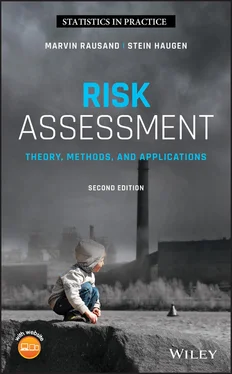
 Figure 3.8Step 5: Determine and assess the risk.
Figure 3.8Step 5: Determine and assess the risk.



